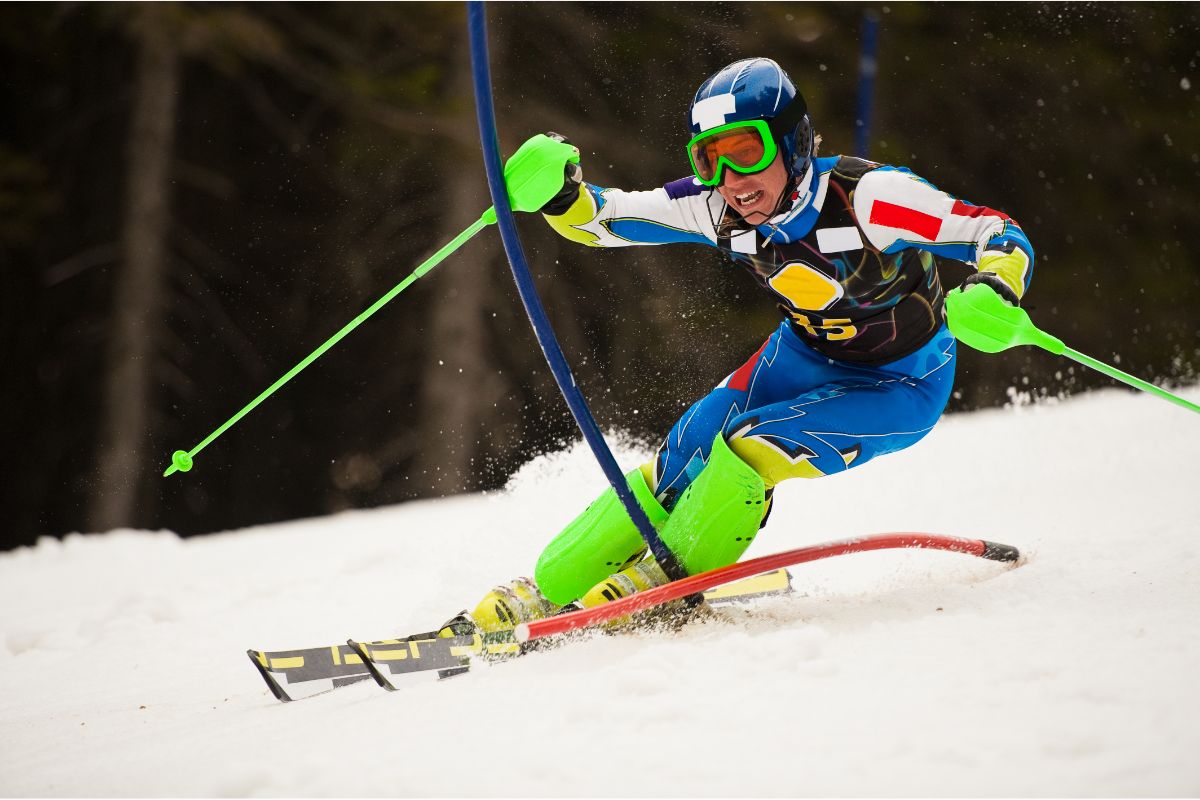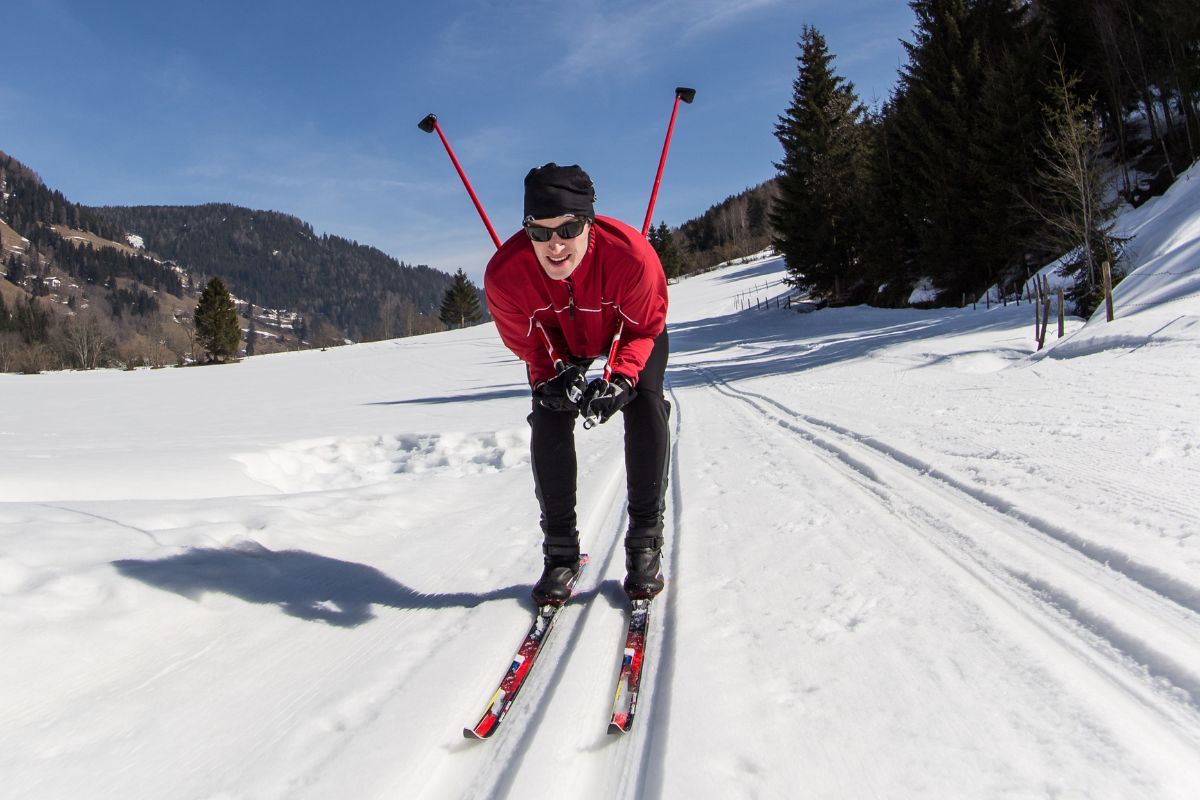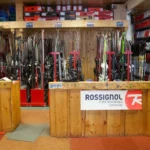If you enjoy skiing or you are looking to get into it, one of the best ways you can do this is by tuning into the Winter Olympics when it’s on. You’ll see some of the best skiers in the world compete in some of the best matches that are incredibly well-covered.

From downhill competitions to cross-country events, there is no shortage of what skiing competitions you can tune in to during the Winter Olympics.
One of the biggest and most popular skiing competitions is actually the Skiathlon and if you’ve never heard of it before, then you’ve come to the right place.
We’ll be going over everything you need to know about the Skiathlon, as well as a brief overview of its history about it.
What Is The Skiathlon?
So, what is the Skiathlon? In short, the Skiathlon is a competition that combines two different types of cross-country skiing into one single event.
The two types of skiing include the classic cross-country skiing style and it is then followed by the freestyle or skate skiing style.
There are two branches of the Skiathlon, the men’s competition, and the women’s competition. For the men’s competition, it is broken down into two 15K intervals. The first interval is classic cross-country skiing and the second interval is freestyle or skate skiing.
For the women’s competition, it is also broken down into two intervals, but they are 7.5K intervals instead. The first interval is also classic cross-country skiing and the second interval is freestyle or skate skiing.
For both competition branches, the first racer to cross the finish line is declared the winner.
A Brief History of the Skiathlon
Cross-country skiing has been a huge part of the Winter Olympics since 1924. While we call it the Skiathlon today, it was originally called “Pursuit” until 2011.
The reason the name was changed was that it was consistently getting confused with another ski event which was the ski portion of the Nordic combined race.
The pursuit portion of the Nordic combined race involves the racers starting off in a handicapped start, which is based on the previous performance of each individual racer in other parts of the competition.
It became incredibly confusing to call both the skiathlon and the Nordic combined race the same name, so they eventually decided to change it so it would be easier to differentiate between them.
In the 2018 Winter Olympic Games, Norway actually won all three of the medals for the men’s branch of the competition.
The gold medal was won by Simen Hegstad Krüger, while his teammate Martin Johnsrud Sundby won the silver, and their other teammate, Hans Christer Holund won the bronze.
Classic Vs. Freestyle

As we have previously mentioned, there are two different intervals that make up the Skiathlon. These two intervals are the classic skiing interval and the freestyle or skate skiing interval.
The Skiathlon requires participants to have an incredible amount of skill because the classic style and freestyle style are very different types of cross-country skiing.
As you have to do both styles in this event, you have to be able to seamlessly transition between the two and have the right technique for both.
Classic cross-country skiing involves the skier sliding one ski forward while the other ski remains stationary. The stationary ski then slides forward while the other one stays in place. This process is repeated during the whole cross-country segment.
Freestyle cross-country skiing, also known as skate skiing, involves the ski tips being at a wide-angle pointing away from them.
The skier then rocks back and forth, while pushing off of the ski from side to side. Freestyle skiing is regularly compared to ice skating because the two are very similar.
Both of these styles of skiing also involve the use of two different types of skis. For the classic cross-country style, you use normal traditional cross-country skis and these skis will be used for the first half of the race.
For the freestyle/skate style, the competitors swap over to skate skis, which are shorter and wider. These particular style of skis are much easier to use for freestyle skiing.
In the Skiathlon, competitors will do the cross-country interval first. Once they have completed this interval, they will arrive at a transition area, where the competitors will change from their cross-country skis into their freestyle/skate skis.
Once the competitors have switched skis, they will begin the freestyle interval of the competition.
Lots of competitors will spend time training for the transition period itself, so when the real thing comes around, they are used to it and have an efficient technique that will save them time swapping between the skis.
Both cross-country skiing and freestyle/skate skiing require their own breathing techniques, pacing, and other skills, so in order to be successful at this event, the competitors have to train and practice for months in advance.
Rules Of The Skiathlon
As with all competitions, the Skiathlon comes with its own set of unique rules. Some of the most important rules of the Skiathlon are as follows:
- Only one representative per team, city, or country
- The race length is two 15k intervals for men and two 7.5k intervals for women
- The course is usually laid out for the skiers in advance
- The race is divided into two parts, with a transition area in the middle
- The winner is the first person to cross the finish line on the second interval
There are a few other rules that need to be followed when competing in the Skiathlon, but these are some of the most important rules that participants need to take into account and follow when they enter.
Conclusion
The Skiathlon is a fantastic skiing competition that requires an immense amount of skill and technique. Competitors need to know how to cross-country ski and freestyle ski, and they also need to be able to seamlessly transition between the two.
The Skiathlon is not for the faint of heart, but if you train properly, it’s very achievable!
- Types of Skiing Terrains: A Comprehensive Guide for Every Skier - December 6, 2024
- Skiing Nutrition: Essential Nutritional Advice and Meal Planning for Skiers - August 15, 2024
- Backcountry Skiing Explained: Essential Tips and Gear - August 8, 2024








